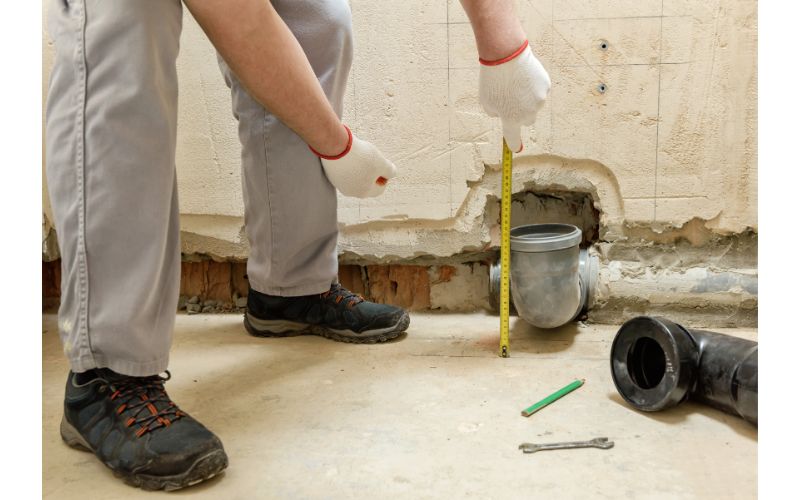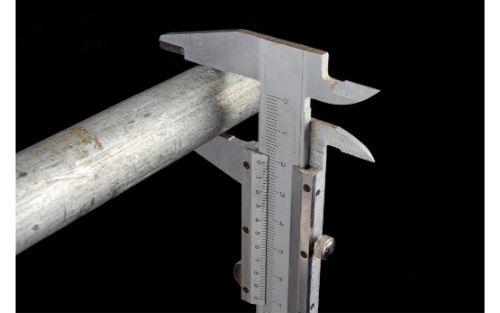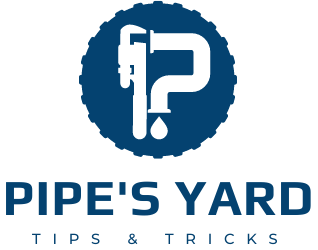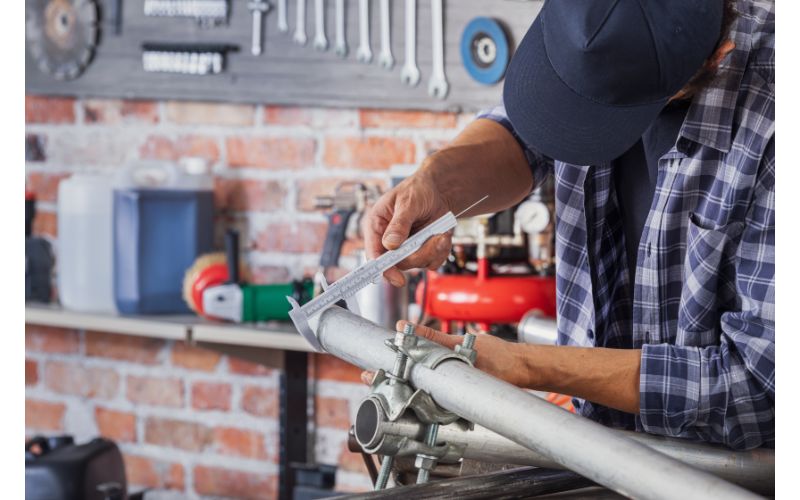Whether it be a building, plumbing, manufacturing, or infrastructure development, precise pipe measurement is always mandatory. It assures proper installation, calculates material requirements, or estimates pipe dimensions for fitting compatibility.
So, how to measure a pipe? To precisely measure a pipe, measure its circumference using a measuring tape or string to determine its diameter. Measure its length with a tape or ruler, and take into account irregularities like expansion and coatings.
You can also investigate other methods for sophisticated measures, such as 3D scanning or ultrasonic measuring. In this article, we’ll go through how to measure it in a step-by-step guide. Along with the equipment needed, every measurement method, and best practices for accuracy. So let’s get started!
How to Measure A Pipe: All Aspects
You can measure the pipe by following these simple steps:
Step 1: Identifying The Reference Points
- Determine the beginning and finishing points of the pipe that you wish to measure.
- When measuring length, start at one location and measure at the other.
- Identify a spot on the pipe’s outer edge as the reference for diameter measurements.
- Then measure across to the opposite outer edge.

Step 2: Circumference And Diameter Measurements
- Measure the pipe’s outside circumference using a measuring tape or piece of string, making sure it is snug but not too tight.
- To accurately measure the circumference, record the measurement on the tape or mark the string, then lay the object flat.
- Divide the circumference measurement by π (pi) to calculate the pipe diameter accurately.
- Alternately, measure the pipe diameter directly by using calipers or a pipe measuring gauge and positioning the measuring jaws. Or you can use a gauge around the pipe’s outside border.
Step 3: Length And Calculating Pipe Volume
- Measure the pipe’s length from its beginning point to its finishing point using a measuring tape or ruler.
- Measure along the pipe’s contour to get the most precise length for pipes with complex forms or bends.
- To get a pipe’s volume, multiply its cross-sectional area by its length (length times pipe radius squared).
Irregular Shapes And Non-Circular Pipes
If measuring non-circular or irregularly shaped pipes, it may be necessary to use specialized measuring tools, such as contour gauges or 3D scanning devices. These instruments are capable of correctly capturing the size and shape of the pipe, enabling accurate computations and measurements.
Tools for Accurate Pipe Measurement
Here is a list of tools you need for accurate pipe measurement:
❖ Measuring tape or ruler: Fundamental tool for length and diameter measurement.
❖ Calipers and micrometers: Precision instruments for small dimensions and wall thickness.
❖ Laser measuring devices: Non-contact method for quick and accurate measurements.
❖ Pipe measuring gauges: Specialized tools for pipe diameter measurement.
❖ Digital measurement tools: Precise readings with additional features.

Alternative Methods for Measuring Pipes
Alternative methods could need specialized tools, knowledge, or access to cutting-edge technology. Here are some examples:
1. Ultrasonic measurement
Sound waves are used in ultrasonic measuring to calculate pipe dimensions and wall thickness. Ultrasonic waves are emitted by a transducer, travel through the pipe, and then bounce back to reveal the pipe’s interior and exterior dimensions.
The measurement of wall thickness and the identification of probable flaws or corrosion are two applications for this non-destructive testing technique.
2. Magnetic Flux Leakage (MFL) inspection
The goal of MFL inspection is to identify variations in the magnetic flux brought on by flaws or changes in pipe diameters. It is possible to determine the wall thickness and any faults by passing the MFL tool over the pipe’s surface and looking for any irregularities.
3. 3D Imaging
Using 3D scanning technology like laser scanners or structured light scanners, the surface of the pipe may be digitally represented. These scanners can accurately create 3D models of the pipe by collecting millions of data points.
Thus, it makes it possible to measure the pipe’s diameter, length, and even irregular forms with great accuracy.
4. Photogrammetry
With photogrammetry, a pipe is photographed from various angles many times, and then the photos are analyzed by software to produce a 3D model. Accurate measurements of the pipe’s diameter and length may be made by taking measurements of the 3D model’s dimensions.
5. Laser-based measurement systems
Laser-based measuring technologies scan the surface of the pipe to measure its dimensions. These devices are capable of quickly and precisely measuring pipe length, diameter, and even cross-sectional profiles.
Here is a video on measuring industrial plastic PVC and ABS pipe:
Factors Affecting Pipe Measurement Accuracy
The accuracy of pipe measurements can be impacted by several factors. To achieve accurate and trustworthy findings, it is crucial to take these elements into account:
● Pipe expansion
As a result of temperature variations, pipes may either expand or compress, changing their size. Consider temperature changes and, if required, use the proper adjustment factors.
● Coatings and corrosion
The outside diameter measurements of pipes may change as a result of protective coatings or corrosion. When measuring the pipe’s actual dimensions, take corrosion and coating thickness into account.
● Shape irregularities
Some pipes may have asymmetrical or oval-shaped profiles. Their dimensions might not be adequately captured by conventional measuring techniques. Use specialist methods, such as contour gauges or 3D scanning, to precisely measure pipes with irregular shapes.
● Manufacturing tolerances
Manufacturing standards may include tolerances for pipes. These tolerances permit very small differences in dimensions. So, recognize the provided tolerances and take them into account when determining the measurement accuracy.
● Accuracy of measuring instruments
The measurement accuracy may be impacted by the precision of the measuring instruments employed, such as tapes, rulers, calipers, or laser devices. Hence, make that the equipment is calibrated, kept up-to-date, and appropriate for the particular pipe measuring task.
● Operator skill and technique
The operator’s skill and technique can affect the accuracy of the measurements. To get accurate findings, follow the right measuring processes, maintain constant pressure and alignment, and reduce human error.
Frequently Asked Questions
Let’s look at some frequently asked questions regarding measuring pipes:
Q: Is it necessary to account for temperature changes when measuring pipes?
Yes, temperature variations may cause pipes to expand or contract, changing their size. Therefore, it is essential to take temperature differences into consideration and apply the proper correction factors if precise readings are required.
Q: How often should I calibrate my measuring tools?
To keep measuring instruments accurate, it is advised to calibrate them often. The calibration schedule may change based on the particular tool, how it is used, and industry norms.
Q: Are there any safety considerations when measuring pipes?
Yes, while measuring pipes, safety should always come first. Wear the proper personal protection equipment (PPE), particularly while working with heavy or sharp pipes, such as gloves and safety glasses.
Thus, to reduce the risk of accidents or injuries, adhere to the safety regulations and procedures unique to your workplace.
Conclusion
For many different types of applications and industries, accurate pipe measuring is essential. You may assure accurate measurements and trustworthy findings by adhering to suitable procedures, utilizing the appropriate equipment, and taking other measuring methods into consideration.
Always put safety first, refer to industry standards, and keep up with new developments in measuring technology. You may safely measure pipes and make a positive contribution to the accomplishment of your projects by paying attention to detail and being dedicated to quality.

